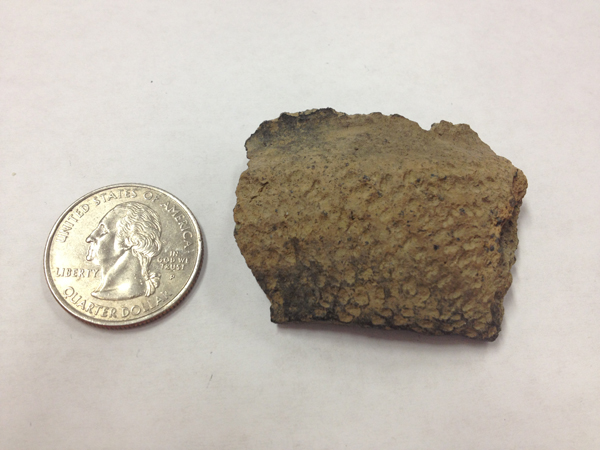Deyo Hall’s small meeting room was filled to capacity with residents of New Paltz and people familiar with the town’s Historic Huguenot Street on the evening of Saturday, April 18.
Joseph Diamond, the SUNY New Paltz Anthropology Department chair, was asked to speak on behalf of “Underneath the Lawns of Huguenot Street: 17th Century Redoubt, Pithouse and Earthfast House.”
This talk was special because it was the first to have all eight years of Diamond’s research compiled into one slideshow.
The show went into detail about many of the artifacts throughout the Huguenot Street site spanning from 17th century pottery and 18th century buttons to the new finding of the palisade.
“My wife and I were able to take the images of the smaller pieces I’ve found and use them to blow them up in order to give people the entire picture of what those pieces belonged to,” Diamond said.
Featured on one slide was a small white porcelain piece with a blue design on the edge. The next slide explained how, judging by the craft, Diamond could assume it once belonged to a Dutch piece of pottery dating back to the 1660s.
“From what we have found so far, we know that Huguenot Street is a prehistoric site — circa 7000 BC to European Contact — with a French Huguenot palisade/stockade — circa 1678-80 — and a post-in-ground earthfast house of the same time period,” Diamond said.
Diamond also said Native American arrowheads have been found over the course of his excavations. Diamond said people interested in the arrowheads are welcome to view them along with many of the other artifacts at the Huguenot Street museum.
The palisade is a recent archeological accomplishment for the field school. It was built in 1678 with wooden stakes as a fortification and was believed to be around 104 feet long.
“Working on the palisade wall was really interesting. We were able to really peel back the layers of time,” second-year anthropology major Jessica Schoonmaker said.
The field school came across the structure eight years earlier. The clue to finding historical structures is an interruption in the soil. Diamond explained that the color difference is an indication that something once existed there in the past.
Diamond began the field school on Huguenot Street in 2001. Since then, he has been head of the field school for SUNY New Paltz.
“I am in debt to [Diamond] for mentally preparing myself to be a critical thinker when it comes to anthropology by helping me establish a solid foundation for understanding the importance of knowing the difference between real science and those that claim to be scientific,” third-year anthropology major Michelle Hall-Hargrove said.
Hall-Hargrove said the hard work digging and getting blisters was ultimately worth it.
“But the rewards were bountiful when you’re carefully peeling back the layers of sediment and expose artifacts,” Hall-Hargrove said.
Her experiences unearthed a pestle, a two pronged fork, musket balls, a cow scapula, tons of glass fragments, pre-historic pottery, pipe stems and the only projectile point.

